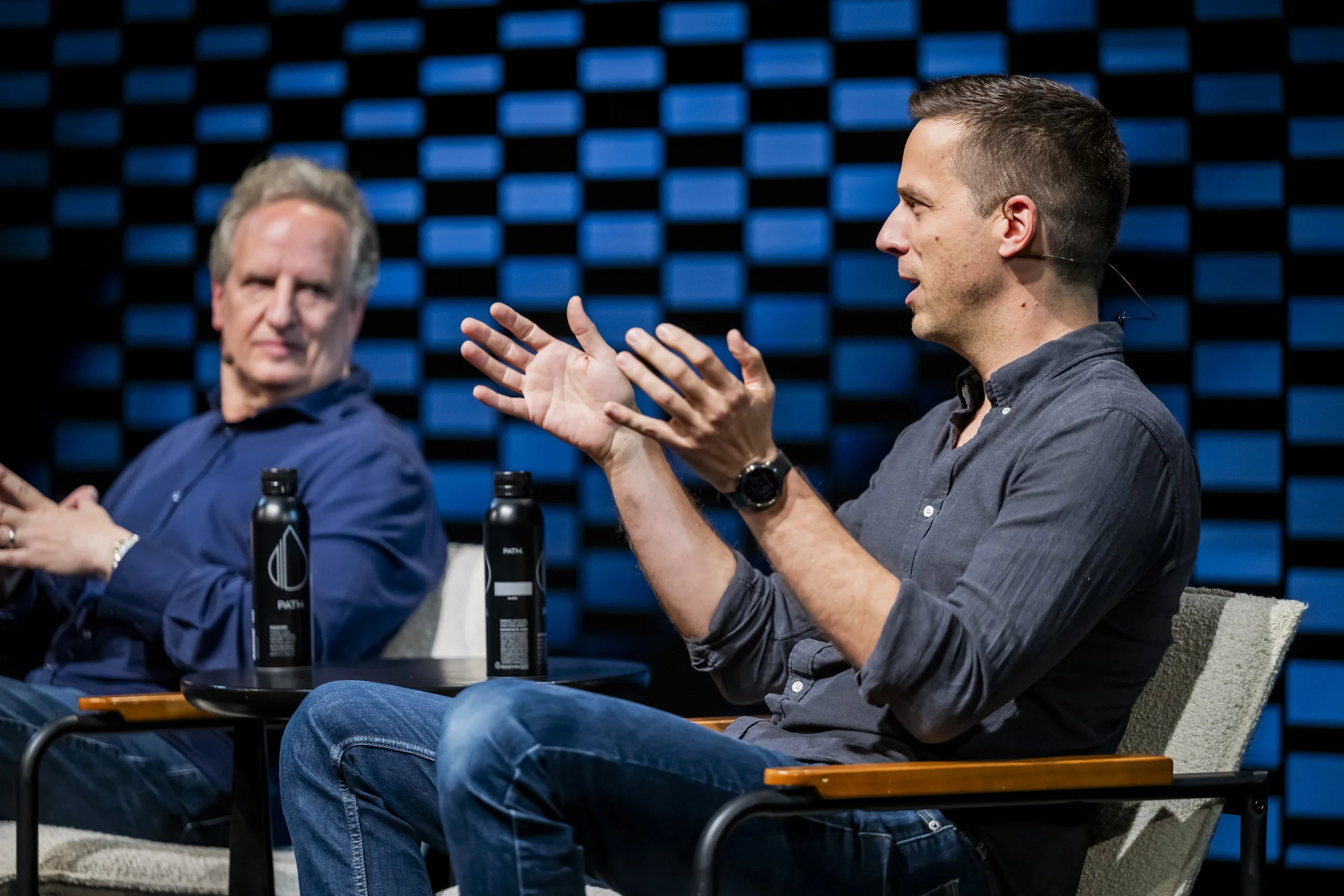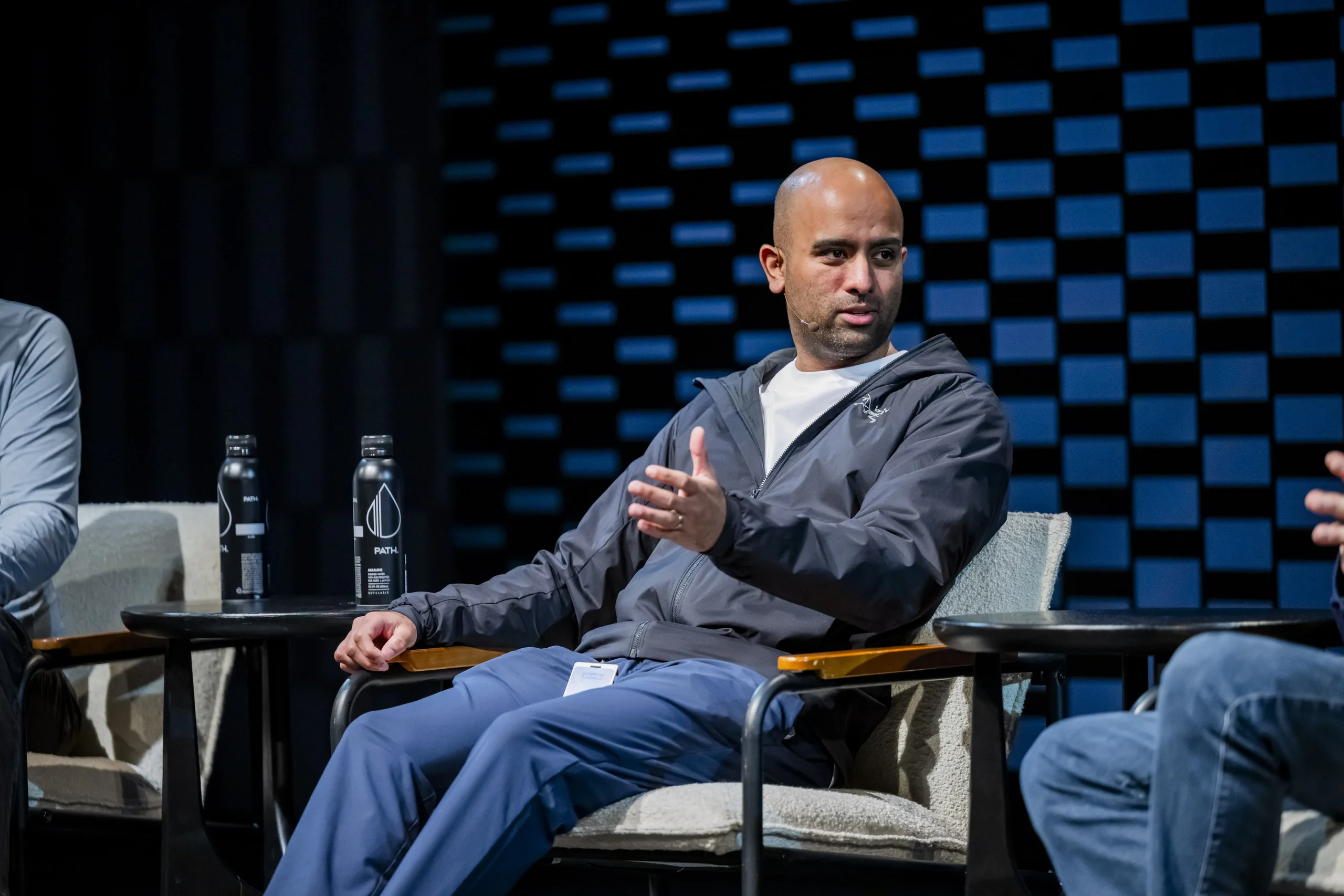CTO Panel: AI is Transforming Engineering Teams Faster Than Expected
Three CTOs share candid insights from the Enterprise Ready Conference 2025 about how AI is transforming engineering organizations - from junior engineers advancing in 18 months instead of three years, to product managers writing their own code, to interns leading major migrations.
This post is part of our ERC 2025 Recap series. Read our full recap post here.
At the Enterprise Ready Conference 2025, three CTOs leading companies through rapid AI transformation shared candid insights about what's working, what's not, and where engineering teams are heading next.

The panel featured Ashwin Sreenivas (CTO and co-founder of Decagon), Allan Leinwand (CTO of Webflow), and Albert Strasheim (CTO of Rippling), moderated by Michael Grinich, CEO and founder of WorkOS.
You can watch the full panel session below:
Enterprise customers want guardrails, not panic
When asked what they're seeing from enterprise customers in this era of AI disruption, the panelists painted a picture that's more pragmatic than fearful. The concern isn't whether to adopt AI—it's how to do it responsibly.
For companies deploying AI agents that interact directly with customers, the challenge centers on brand protection and regulatory compliance. These systems aren't deterministic like traditional software, making it impossible to guarantee they'll never say something problematic. Enterprise buyers want robust guardrails, quick detection of issues, and clear controls they can demonstrate to regulators.

The value proposition is clear: 24/7 support coverage, enhanced customer experiences, and direct ROI. But companies need confidence that entrusting their brand to AI agents won't backfire.
Marketing teams face a different challenge. After decades of mastering SEO, blue links, and ad placements, they're suddenly navigating a world where ChatGPT and Claude determine what customers see. This has spawned an entire practice around "answer engine optimization"—ensuring websites are structured so AI tools represent brands accurately. Companies are actively optimizing alt text, FAQs, and content structure specifically for AI consumption.
What works now and what doesn't
Current AI capabilities shine brightest when tasks are well-defined, even if multi-step. Customer support falls into this category—there's a relatively finite set of customer requests, each with clear procedures for resolution. AI agents excel at executing these workflows with creativity while following established guidelines.
The technology struggles more with ambiguous tasks requiring relationship-building and quick pivoting based on context. Sales discovery, for example, remains challenging because it demands reading subtle cues and adapting strategies on the fly.

Context remains the critical missing piece. An engineering leader might receive hundreds of daily emails referencing a company they left years ago. Without proper context about current roles, priorities, and relevant information, AI tools risk providing suggestions that are technically correct but situationally wrong—like offering code for an old project or referencing an outdated organizational structure.
The timeline for improvement? "The only safe prediction is no prediction," as one panelist noted. The pace of change makes even six-month forecasts unreliable.
CTO mode: Proving what's possible
Several panelists described a shift in their own roles—writing more code than they have in years, not out of necessity, but to demonstrate possibility.
One CTO spent a weekend generating 130 pull requests to upgrade dependencies across the codebase. The team had estimated this work would take six months. By proving it could be done in days, he unlocked a cascade of automation initiatives—particularly from the Poland-based team, who took the concept even further.
These aren't production-level contributions in the traditional sense. Instead, they're proofs of concept: fixing UX papercuts by automatically pulling context from Jira tickets, generating PRs, and shipping changes. The goal is showing teams what's achievable with current tools, then letting them run with those ideas.
Modern AI coding assistants make this possible even for leaders who aren't writing code daily. Perfect syntax knowledge is no longer required—you can describe what you want in plain language and have it translated to TypeScript or any other language.
Engineering teams are evolving in surprising ways
The impact on engineering organizations extends well beyond individual productivity gains.
Junior engineers advancing faster
Engineers early in their careers are progressing significantly faster than before. One panelist noted junior hires moving from entry-level to mid-level positions in 18 months instead of three years. The reason: they no longer need to track down the one person who understands a particular system. They can query the codebase directly, ask for explanations, and become productive across unfamiliar territory much faster.
This contradicts the narrative that AI will eliminate entry-level positions. These CTOs are actively hiring junior engineers in large cohorts, confident that AI tools will help them ramp up quickly.
Mobility across codebases
Engineers are becoming more willing to work across different parts of the codebase. The fear of touching unfamiliar systems has diminished because developers can now ask the code to explain itself. This increased mobility means teams can shift resources more flexibly without extensive knowledge transfer.
Product managers writing code
Perhaps the most dramatic shift is product managers building their own prototypes using AI tools. These aren't production-ready implementations, but they're functional enough to show to users and gather feedback before engineering teams invest time in final versions. PMs and designers are even fixing issues themselves in Slack and other tools, removing entire categories of work from engineering queues.
Interns leading major migrations
The single heaviest user of Cursor at one company over the summer was an intern in Bangalore, who powered through a massive frontend migration project. A few years ago, an intern would never have been trusted with such a significant initiative. Now, with AI assistance, even early-career engineers can tackle ambitious technical projects.
Writing for and with AI
Communication patterns within engineering teams are shifting. For years, getting fast-moving engineers to write detailed PR descriptions was a constant struggle. That problem has essentially disappeared. Engineers still need to review the AI-generated summaries, but the barrier to documenting work has vanished.
Engineers are also embracing code documentation more readily, partly because it helps AI agents work more effectively. If an agents.md file makes the codebase easier to navigate with AI assistance, developers are motivated to maintain it.
This raises an interesting question: if AI is generating the PR description and AI-powered testing tools are reviewing it, are we creating a closed loop without human oversight? The panelists emphasized that humans must still own the final output. The "you build it, you ship it, you run it 24/7" mentality remains fundamental.
The LLM as a primitive: Learning to build with non-deterministic components
For companies where AI is a core product feature rather than just a development tool, engineering teams are adapting to a fundamentally new building block that behaves unlike anything else in their stack.
Traditional software development prioritizes reliability and deterministic output above almost everything else. LLMs obliterate that assumption. When your code depends on an LLM to return a specific value based on certain conditions, you can't treat that return value as guaranteed truth. One percent of the time, the LLM might produce garbage output.
This forces a complete rethinking of how code is written around these models. Software must handle LLM misbehavior gracefully because occasional failures are inevitable.
The forward deployed engineer returns
Multiple panelists highlighted the resurgence of forward deployed engineering—engineers who work directly with customers to implement solutions. This model, pioneered at companies like Palantir, is experiencing a renaissance in the AI era.
One company launched a forward deployed team nine months ago to support custom business app development. These engineers join sales calls, demonstrating what's possible and helping close major enterprise deals. After customers onboard, the same team helps unlock additional value by showing the full platform capabilities.
This motion appears critical for AI companies serving large enterprises today, though the panelists believe it won't last forever. As platforms mature—becoming more like Shopify with broad, configurable toolsets—the need for intensive implementation support should diminish.
Advice for founders: Focus on the only thing that matters
When asked what advice they'd give founders building for this AI-native era, the panelists largely dismissed questions about technology stack and architecture. The overwhelming message: focus exclusively on delivering value to customers.
The unique opportunity today is replacing end-to-end workflows that previously only humans could perform. This creates entirely new value propositions: tasks that cost millions of dollars can now be done more cheaply and efficiently, or done 10x more frequently than before.
Getting this core value proposition right matters more than technical decisions. You can make mistakes with architecture and tech stack—those are solvable problems. But if you don't identify the right human workflows to replace with AI agents, nothing else matters.
That said, once you find product-market fit, be ready for scale. Growth curves for successful AI products are steeper than historical norms. Planning for the next order of magnitude isn't optional—it's essential for survival.
From chatbots to something real
One panelist captured the moment perfectly: "It's funny to mention chatbots—they're kind of back against, but actually they work now."
For years, chatbots were a punchline, a symbol of overpromised and underdelivered AI. Now they actually solve real problems at scale. The technology finally caught up to the ambition.
This transformation isn't lost on these engineering leaders. They're building for a future where AI agents interact with products at massive scale—one panelist noted that over 20-30% of website traffic is now bots and agents, not humans.
The companies succeeding in this environment share common traits: they maintain focus on customer value over technical elegance, they invest in forward deployed teams to bridge the gap between capability and implementation, they empower their engineers with AI tools while maintaining quality standards, and they're preparing infrastructure for exponential growth even before it arrives.
As one panelist noted, predicting timelines in AI is futile. But the direction is clear: we're moving from isolated productivity gains to fundamental changes in how software is built, deployed, and consumed. The companies that recognize this shift and act decisively—rather than waiting for perfect clarity—are the ones defining the next era of enterprise software.
Read our full ERC 2025 Recap post here.